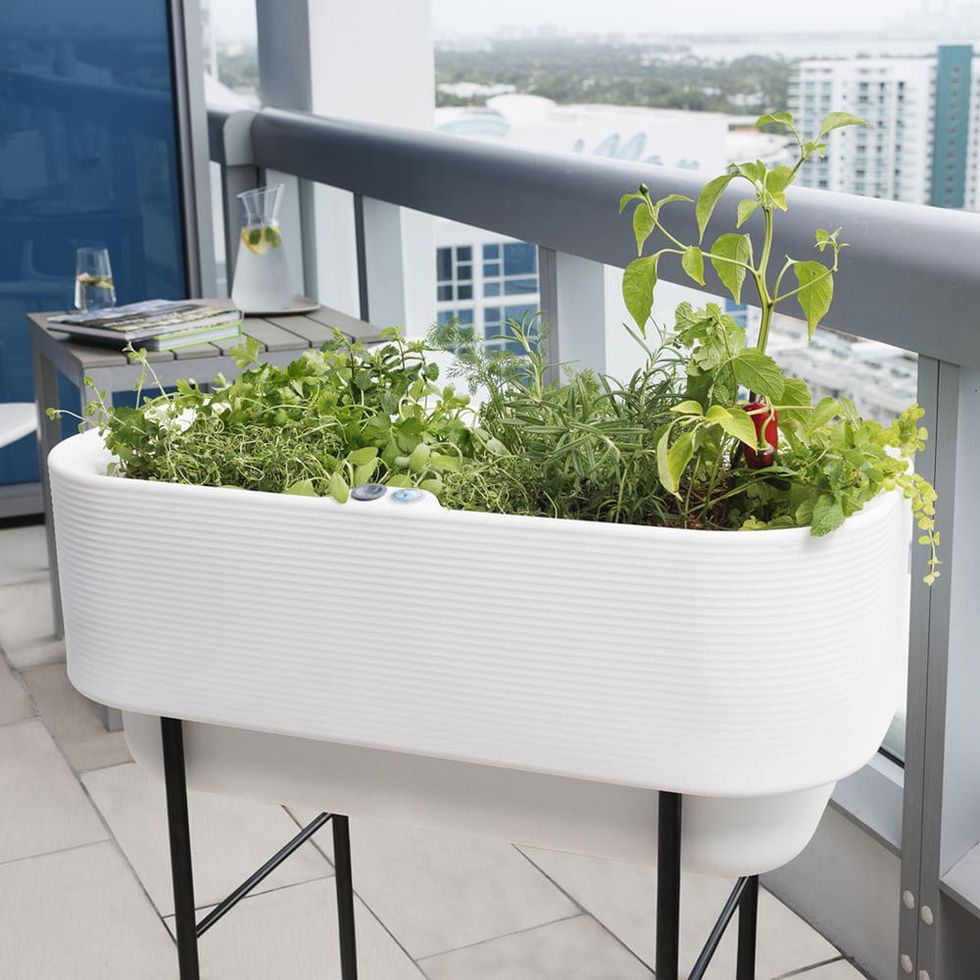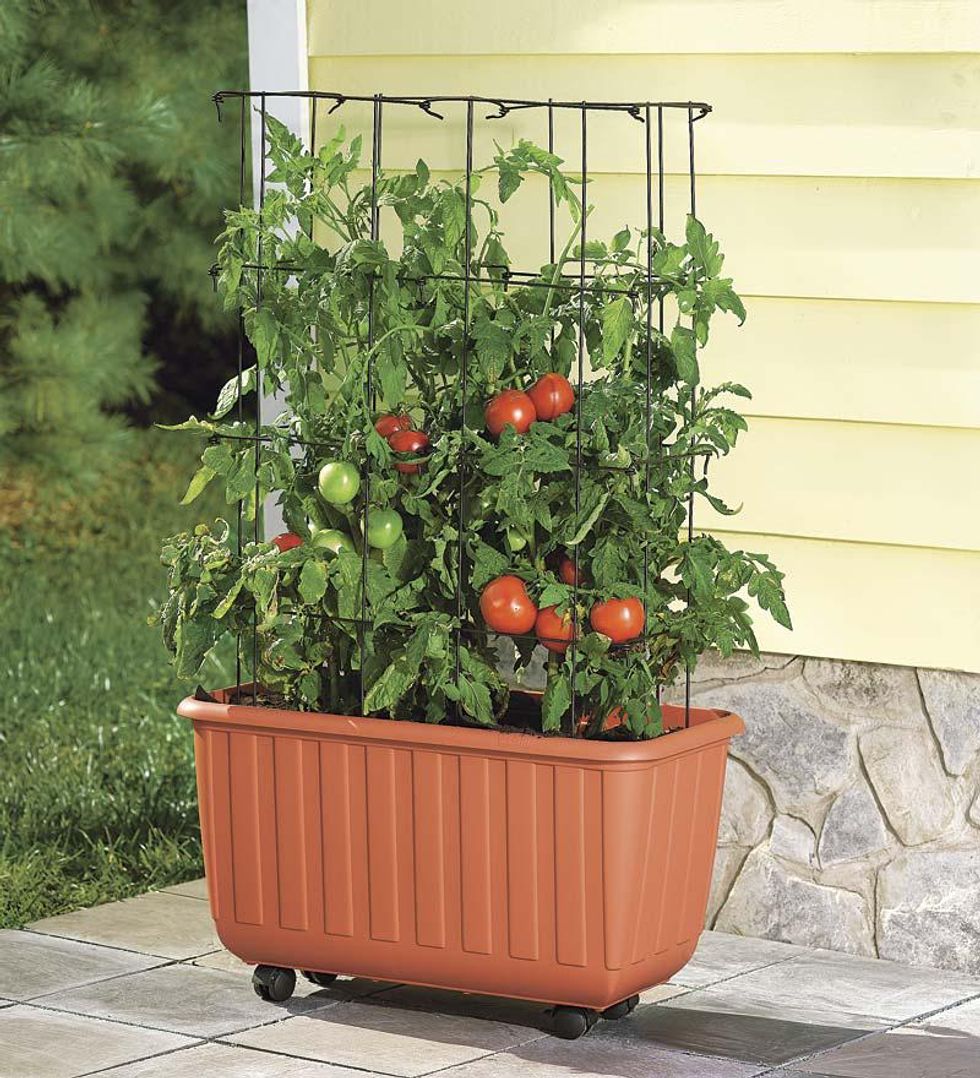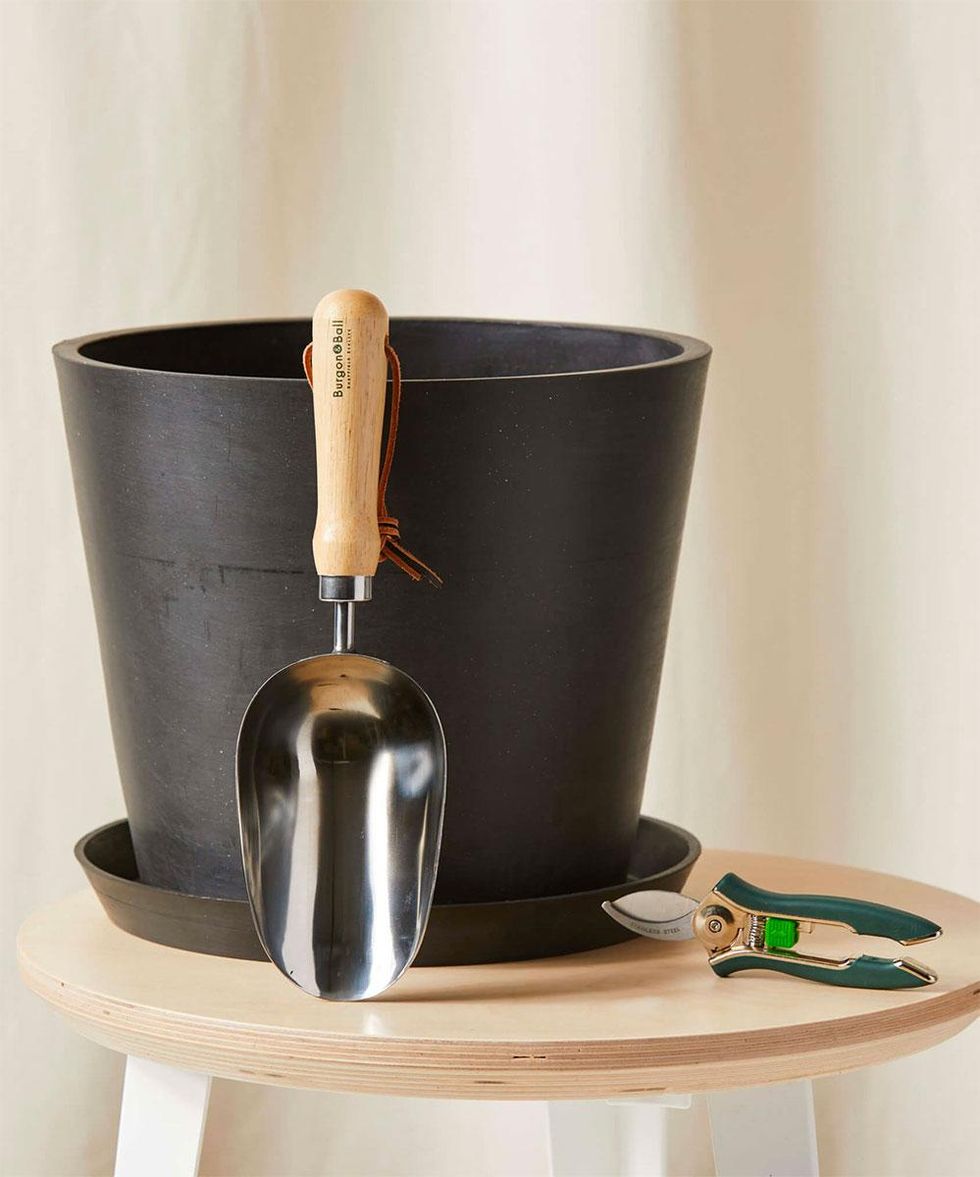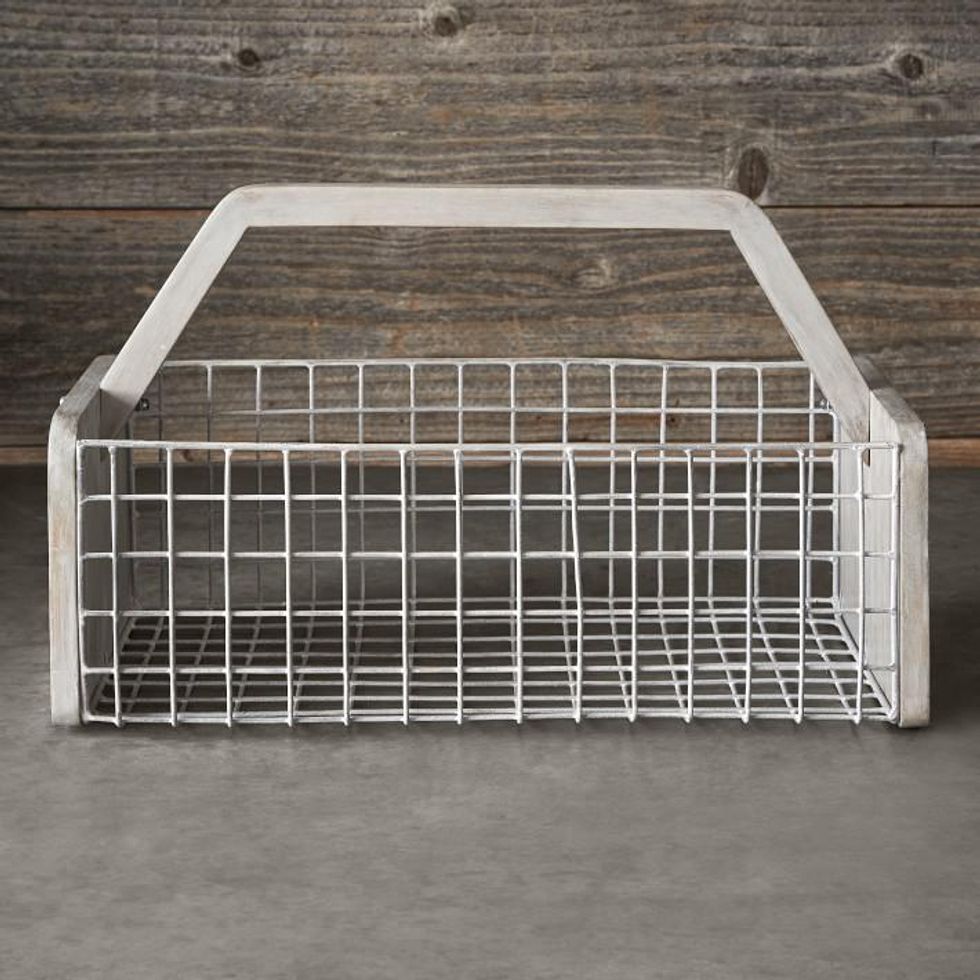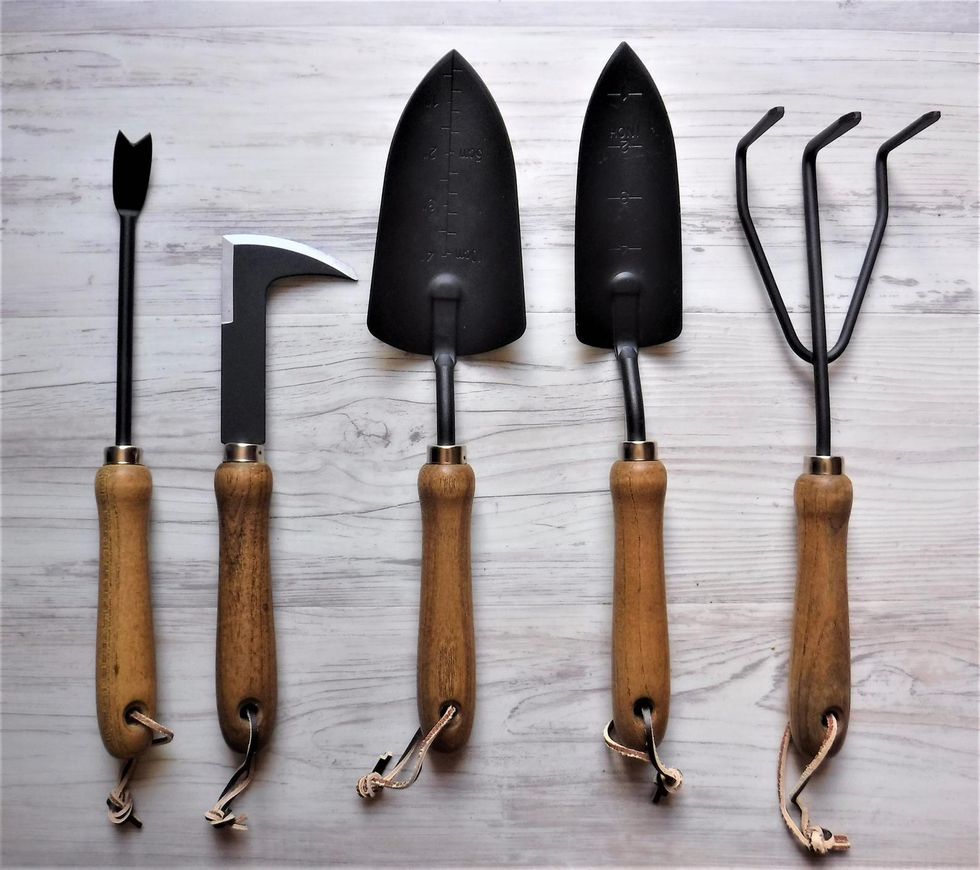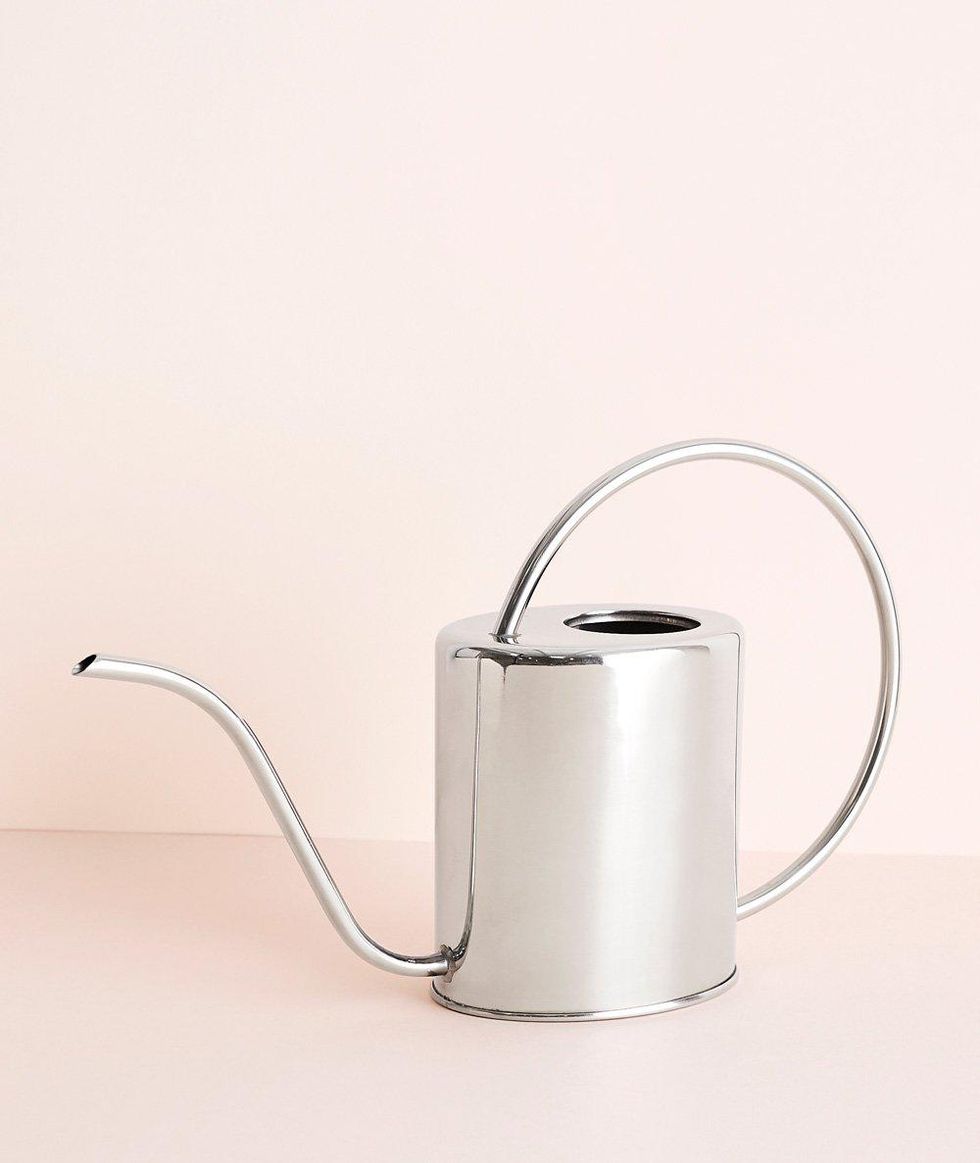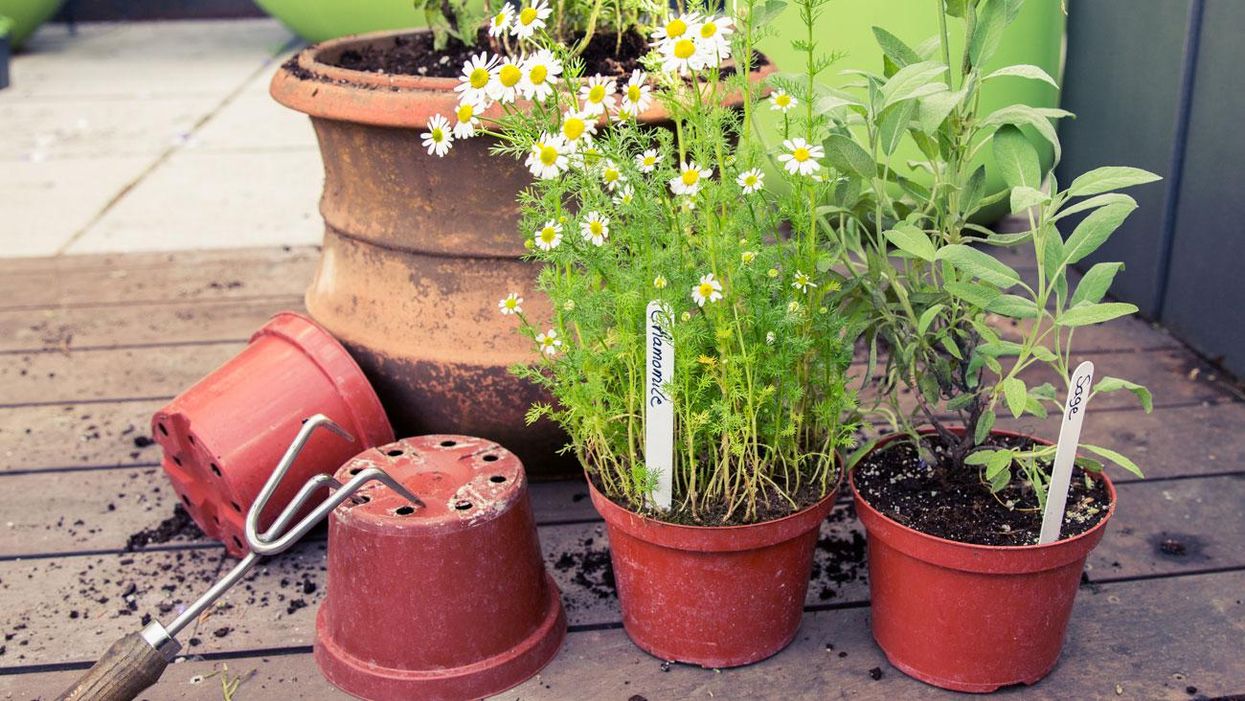
A luscious-looking garden is a prized possession that may seem unattainable or even impossible when living in a tall story apartment or small home with limited yard space. Yet still we swoon over HGTV gardening specials and endlessly scroll Pinterest for ideas to create our own patch of green. The truth is, you don't actually *need* a yard to have a plentiful garden. In fact, growing veggies, fruits, herbs, and more can be more successful when grown off the ground via a raised bed or in containers on your patio. The term "container garden" has picked up a lot of buzz, and despite its trendy ring, it is ideal for small homes and shared living spaces. But what is container gardening really, and can it really be the garden of your dreams? Ahead, we break down the dos and don'ts of this unique gardening method so you can enjoy a peaceful oasis wherever you call home.
What is container gardening?
As you can likely tell from its name, container gardening is the practice of growing plants in isolated vessels instead of directly in the ground. The contained space can take the shape of almost anything—a classic terra-cotta pot, a wooden crate, or even an unused paint bucket—and can hold one or a variety of plants depending on your choosing. So how do single plants confined in containers become a garden? The answer is simple: Each planter, whether it holds one plant or many, is then grouped together to form a garden.
However, simply placing the containers near each other will not give you the charming garden you've been dreaming of. Creating a garden requires thoughtful planning, especially when it comes to container gardens. From choosing which type of plants to grow, varying container sizes, and the conditions of your space, there are a few factors to consider in order to ensure the success of your garden.
Getting started
To begin building your container garden, first and foremost you'll need to assess your available space and what you plan to grow. Knowing these two things ahead of time will not only make your trip to the garden store stress-free, it will also help you envision your garden. Choosing plants that play well together will benefit plant growth and your garden in the long run. If your garden is going to be primarily vegetables, consider varieties that grow short in stature and are suited for small quarters. As a good rule of thumb, it's best to place plants with similar needs, like the amount of sunlight and water, together.
How to keep your garden happy and growing
Soil quality and proper drainage are two things that should be considered with any type of planting. A quality potting soil with a healthy mix of peat moss, compost, and a slow-release fertilizer is ideal to start with, though you may need to add more fertilizer as the plants continue to grow. As for drainage, the tiny hole centralized on the bottom of most pots is not fitting for growing veggies, herbs, or fruit trees. For makeshift planters, it is a good idea to add more drainage by adding additional holes, which can be accomplished by drilling or carving into the planter's bottom.
Now that you've planned and successfully repotted, you should begin seeing your garden flourish. As with any type of garden, you'll need to establish a few rituals and plan to tend to the plants regularly, but container plants in particular will require a little more TLC. Since the roots of the plants are housed within the pot, they will require more frequent watering than those directly planted in the earth. Developing a daily ritual of checking the soil, especially during hot and sunny periods, is a good way to determine the best times of day to water them.
Things to keep in mind
Going the container route has its many benefits and can ultimately save space. Which means having a beautiful garden on a slender strip of patio or a small balcony is absolutely possible. If you plan to have your garden on a balcony or terrace, take a moment to think about how much direct sunlight and wind the area will receive. A high balcony will likely subject plants to more wind than normal, so extra support from a lattice or wire trellis might be necessary.
Knowing the growth pattern and general information about each of your plants will also help determine the best conditions. So while it may sound like a no-brainer, keeping each plant tag and seed package well after you've planted is smart (or just use Dr. Google). The tags and seed packages will give insight to how large the plants will get, the sunlight and watering needs, and the plants' habitats, which can be helpful when deciding neighboring plants. They'll also give climate zoning information, which is crucial to ensure your plants don't struggle in extreme temperature conditions. A garden of any size will require effort in the form of tending, and rather than think of it as tedious, we prefer to view it as a daily mindful practice.

